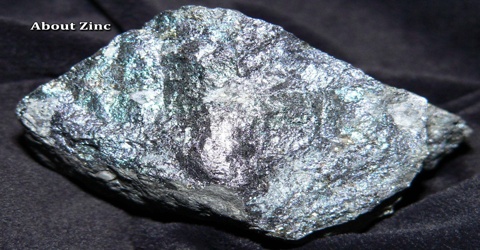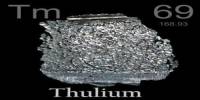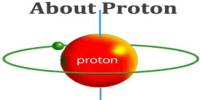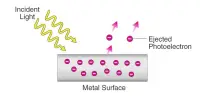About Zinc
Definition
Zinc is a shiny, bluish-white metallic element that is brittle at room temperature but is malleable when heated. It is a mineral that is essential to the body and is a constituent of many enzymes that permit chemical reactions to proceed at normal rates. It is the first element in group 12 of the periodic table. In some respects zinc is chemically similar to magnesium: both elements exhibit only one normal oxidation state (+2), and the Zn2+ and Mg2+ ions are of similar size.

Zinc is the 24th most abundant element in the Earth’s crust. It naturally exits in air, water, soil, and the biosphere. Most rocks and many minerals, as well as humans, plants and animals contain zinc in varying amounts. It is involved in the manufacture of protein (protein synthesis) and in cell division. Zinc is also a constituent of insulin, and it is involved with the sense of smell. Food sources of zinc include meat, particularly liver and seafood; eggs; nuts; and cereal grains.
Zinc is an essential mineral perceived by the public today as being of “exceptional biologic and public health importance”, especially regarding prenatal and postnatal development. It is essential to human and animal growth. Its atomic number 30; atomic weight 65.39; melting point 419.4°C; boiling point 907°C; specific gravity 7.133 (25°C); valence 2.

Production of Zinc
In solid form Zinc is grayish white, owing to the formation of an oxide film on its surface, but when freshly cast or cut it has a bright, silvery appearance. Its most important use, as a protective coating for iron known as galvanizing, derives from two of its outstanding characteristics: it is highly resistant to corrosion, and, in contact with iron, it provides sacrificial protection by corroding in place of the iron.
The chemical compounds of zinc, particularly zinc oxide, have important industrial and pharmaceutical uses.
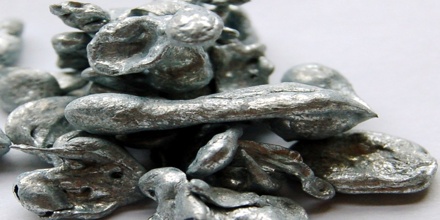
Properties and Applications of Zinc
Zinc is a bluish-white, lustrous, diamagnetic metal, though most common commercial grades of the metal have a dull finish. It is somewhat less dense than iron and has a hexagonal crystal structure, with a distorted form of hexagonal close packing, in which each atom has six nearest neighbors (at 265.9 pm) in its own plane and six others at a greater distance of 290.6 pm.
Zinc is critical for all life on Earth, and used in more than 300 enzymes; zinc deficiency was recognized as a clinical health problem in 1961. The International Zinc Association explains that zinc is critical to proper cellular growth and mitosis, fertility, immune system function, taste and smell, healthy skin and vision.
Zinc is a weak metal with a tensile strength less than half that of mild carbon steel. It is generally not used in load-bearing applications, although inexpensive mechanical parts can be die cast from zinc.
Between 212-302 oF zinc becomes ductile and malleable, but at elevated temperatures reverts to a brittle state. Again, zinc alloys greatly improve on this property over the pure metal, allowing more complex fabrication methods to be used. Pure zinc has low toughness and is generally brittle, but zinc alloys generally have high impact strength compared to other die casting alloys.

The use of zinc in construction is one of the most common and oldest. For more than 150 years, zinc has been used to protect steel from corrosion, and in particular through hot-dip galvanizing and other forms of zinc coatings. In recent years, even pure zinc metal sheets are also occasionally used in roofing and paneling systems.
Reference: dictionary.com, galvanizeit.org, britannica.com, wikipedia.
